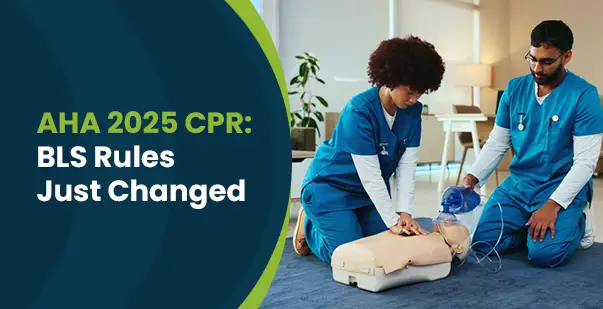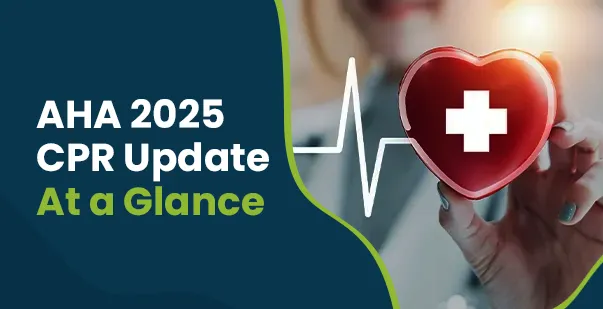The warehouse hums with the sound of forklifts beeping and boxes sliding onto pallets. You are walking past a towering shelf when you spot a new hire scaling a ladder, no harness, no spotter. Your stomach drops. Do they know the safety protocol? Were they trained? Are you up to date with the latest standards? Situations like this are more common than you think. According to OSHA, fall protection violations have ranked as the most cited workplace safety violation for over 10 consecutive years. Combine that with 4,764 fatal work injuries reported by the U.S. Bureau of Labor Statistics in 2020, and the urgency becomes clear: safety oversights are not rare; they are routine and often fatal.
That’s where certifications come in. Certifications like the Certified Safety Professional (CSP) or the Occupational Health and Safety Technologist (OHST) provide structured training that can empower you and your team to act decisively and safely. Learn about the five key certifications that promote a safer, more responsible work environment, tailored to different roles and industries.
Why Safety Certifications Matter in Today’s Workplaces
In today’s dynamic work environments, safety certifications are crucial across various industries. They not only ensure compliance with regulatory standards but also play a pivotal role in fostering a culture of safety, reducing workplace incidents, and enhancing employee morale.
1. Ensuring Regulatory Compliance
Safety certifications help organizations meet legal obligations set by the Occupational Safety and Health Administration (OSHA) and similar authorities. More than just ticking boxes, some certifications, like the OSHA 10-Hour and 30-Hour Training, or Certified Safety Professional (CSP), equip professionals to handle inspections confidently and proactively prevent fines.
For instance, OSHA’s General Duty Clause is commonly overlooked. It requires employers to maintain a workplace free from “recognized hazards,” even if no specific standard applies. Lacking a certification might mean failing to recognize or report those general hazards, leading to potential citations.
2. Cultivating a Safety-First Culture
A certified workforce signals a shift in mindset, from reactive to proactive. For example, a team starting each day with toolbox talks, conducting routine walk-throughs, or placing rotating safety reminders on walls and screens. These actions stem from training and create a daily rhythm of safety consciousness.
Certifications ensure employees know not just what to do in an emergency, but also how to prevent one from occurring in the first place. This cultural shift encourages employees to prioritize safety, leading to more vigilant and responsible workplace behavior.
3. Reducing Workplace Incidents
Certified training builds confidence and competence, significantly lowering the risk of injuries. According to a Liberty Mutual Workplace Safety Index, workplace injuries cost U.S. businesses over $58 billion annually, primarily due to overexertion and falls.
Organizations that invest in comprehensive safety training often see a significant decrease in workplace accidents, leading to fewer disruptions and lower costs related to medical leave and workers’ compensation.
4. Enhancing Employee Morale and Productivity
Employees who feel safe are more engaged, alert, and efficient. Safety certifications signal that the company values their well-being, not just compliance. This investment builds trust.
Higher morale leads to lower absenteeism, stronger team bonds, and better retention. In fact, organizations with strong health and safety cultures experience up to 68% lower employee turnover, according to the Society for Human Resource Management (SHRM).
5. Financial Benefits
Beyond compliance and culture, safety pays. Fewer accidents mean lower insurance premiums, fewer workers’ compensation claims, and less downtime. According to OSHA, for every $1 invested in injury prevention, businesses save $4 to $6. And the benefits don’t stop internally. Companies with strong safety records often win bids more easily, attract better talent, and build stronger client trust, all boosting long-term profitability.
6. Adapting Safety Protocols for Tech-Driven and Hybrid Workplaces
As technology reshapes how we work, safety protocols must evolve. Hybrid models bring unique challenges, such as ergonomic strain from makeshift home setups, trip hazards from unmanaged cables, or fire risks from overloaded extension cords. Meanwhile, tech-heavy offices may face new concerns like data center overheating, electrical faults, or machinery-related risks.
Updated safety certifications help teams navigate these modern threats confidently, even beyond the traditional factory or construction site.
Be Prepared. Be CPR Certified.
Start your online CPR training today and learn life-saving skills.
The Top 5 Safety Certifications for a Safer Work Environment
Not all safety roles require the same level of expertise. Some positions involve hands-on hazard prevention, while others demand leadership in regulatory compliance and program design. The following certifications help professionals at various career stages build credibility and keep workplaces safe. Here’s what each offers, who it’s best suited for, and why it’s worth considering:
Certified Safety Professional (CSP), BCSP
Issuer: Board of Certified Safety Professionals (BCSP)
Level: Advanced
Average Time/Cost: Varies; exam fee approx. $350, with prep time spanning several months
The CSP is often seen as the gold standard for senior safety professionals. It demonstrates mastery in managing safety programs, risk assessment, incident investigation, and compliance strategy. Candidates need a bachelor’s degree, four years of safety experience, and a BCSP-approved credential like the ASP. Recertification is required every five years, emphasizing continuous learning and professional development.
Who Should Consider Certification?
Health and safety managers, Environmental, Health, and Safety (EHS) directors, or compliance leaders in manufacturing, energy, or construction industries.
Why It’s a Good Choice:
Globally recognized and often required for top-level safety leadership roles, especially where strategic oversight is critical.
Associate Safety Professional (ASP), BCSP
Issuer: Board of Certified Safety Professionals (BCSP)
Level: Intermediate
Average Time/Cost: Exam fee approx. $350; typical prep time: 1–3 months
The ASP certification validates core knowledge in safety principles, hazard identification, and regulatory awareness. Although not a strict prerequisite for the CSP, it’s a common stepping stone. Industries like manufacturing, oil & gas, and construction often prefer ASP-certified professionals for mid-level safety roles.
Who Should Consider Certification?
Safety coordinators, site supervisors, or early-career professionals looking to progress to roles like safety manager or EHS specialist.
Why It’s a Good Choice:
Gives a strong foundation for higher-level certifications while making you more competitive for site-level and supervisory roles.
OSHA Safety & Health Fundamentals Certificate, OSHA
Issuer: Occupational Safety and Health Administration (OSHA)
Level: Foundational
Average Time/Cost: ~68–77 hours of training; cost depends on provider (often $800–$1,500 total)
This certificate, offered via OSHA Training Institute Education Centers, focuses on understanding and applying OSHA standards across sectors, construction, maritime, or general industry. It differs from general OSHA outreach training by offering deeper, more technical and management-focused content. While not a certification per se, it’s well-respected in compliance-heavy fields.
Who Should Consider Certification?
Facility managers, operations leads, or safety officers are responsible for aligning workplace practices with OSHA rules.
Why It’s a Good Choice:
Helps meet compliance demands and prepares teams to address common OSHA violations proactively.
Certified Safety and Health Official (CSHO), OSHA/TEEX
Issuer: Texas A&M Engineering Extension Service (TEEX) / OSHA
Level: Advanced
Average Time/Cost: ~225 hours; cost varies but often ranges from $2,000–$4,000
The CSHO is built for professionals seeking in-depth knowledge of workplace safety laws and compliance systems. With specialized tracks in general industry, construction, and healthcare, this credential is ideal for high-responsibility roles. It’s often pursued by those preparing for OSHA audits, internal inspections, or consultancy work.
Who Should Consider Certification?
EHS consultants, OSHA outreach trainers, or safety officers in high-risk sectors such as utilities, mining, and logistics.
Why It’s a Good Choice:
Enhances your preparedness for inspections and positions you for leadership in safety training and compliance management.
Safety Management Certificate (SMC), ASSP
Issuer: American Society of Safety Professionals (ASSP)
Level: Foundational to Intermediate
Average Time/Cost: ~1–3 months; cost starts around $1,000–$1,500
The SMC equips professionals with the management side of safety: budgeting, policy development, communication, and cultivating safety culture. It’s ideal for those stepping into leadership and looking to implement structured, measurable programs. While the SMC doesn’t expire, many use it as a gateway into broader ASSP certificate tracks.
Who Should Consider Certification?
Site supervisors, team leads, or new safety managers looking to align safety with business goals.
Why It’s a Good Choice:
Focuses on practical implementation and leadership, especially useful for those transitioning from field work to managerial roles.
Learn CPR. Save Lives. Get Certified Online.
Master essential CPR techniques and get certified today.
Impact of CPR, First Aid, and BLS Certifications on Workplace Safety
Emergencies don’t come with warnings. That’s why workplaces, regardless of industry, benefit from having staff trained in life-saving skills. CPR, First Aid, and BLS certifications equip employees to handle medical crises efficiently, reducing the impact of injuries and potentially saving lives. Here’s a quick comparison of what each certification covers and how it contributes to a safer workplace.
| Certification | Core Skills & Knowledge | Practical Safety Improvements | Typical Duration |
| CPR(Cardiopulmonary Resuscitation) | – Spotting signs of cardiac arrest- Chest compressions + rescue breaths- AED use | – Higher survival rates- Faster crisis response- Better overall preparedness | 2–4 hours |
| First Aid | – Treating bleeding, burns, fractures- Handling choking and allergies- Giving initial care until help arrives | – Lower injury severity- Shorter recovery time- Stronger safety culture | 4–6 hours |
| BLS (Basic Life Support)(Primarily for medical/high-risk jobs) | – Airway management- CPR for all age groups- Team-based emergency response | – Elevated care standards- Stronger team coordination- Compliance with healthcare rules | 4–6 hours (often with hands-on testing) |
CPR certification equips employees with the skills to respond quickly and effectively during cardiac emergencies, an intervention that can drastically improve survival rates. First Aid certification complements this by preparing individuals to manage a wide range of injuries, from cuts and burns to fractures, helping reduce complications and promoting a culture of proactive safety.
For healthcare professionals and those working in high-risk environments, Basic Life Support (BLS) certification offers a more advanced level of emergency training, combining CPR with additional life-saving techniques to ensure a comprehensive and confident response when every second counts.
Choosing the Right Certification for Your Career
Selecting the appropriate certification is more than just adding credentials to your resume; it’s a strategic decision that can significantly influence your career trajectory, earning potential, and alignment with industry standards. Here’s how to make an informed choice:
1. Clarify Your Career Goals
Start by identifying your purpose for pursuing a certification. Are you shifting into safety from another role, aiming to qualify for site-level leadership, or deepening your expertise in a specific domain like industrial hygiene or construction safety? For instance, those targeting roles in high-risk environments may benefit from the Construction Health and Safety Technician (CHST) credential. At the same time, professionals focused on exposure assessment or environmental risks may consider the Certified Industrial Hygienist (CIH) certification. Picking the right path depends on both your experience and where you want to go next.
2. Assess Industry Requirements
Investigate the certifications commonly required or preferred in your desired industry. In sectors like construction, manufacturing, warehousing, or healthcare, certain credentials are not optional; they are expected. For example, OSHA 10 or 30 certifications are essential for many construction roles, while CPR and BLS certifications are prerequisites in most patient-facing healthcare positions. Aligning your certification path with these industry standards ensures both compliance and competitiveness.
3. Evaluate Certification Credibility
Not all certifications carry the same weight. Prioritize those offered by reputable organizations recognized within your industry. Certifications from reputed bodies not only validate your expertise but also enhance your credibility with employers.
4. Consider Your Experience Level
Select certifications that match your current experience and skill level. Entry-level professionals might opt for foundational certifications, which provide essential knowledge without requiring prior experience. Mid-career professionals could pursue advanced certifications such as the Certified Information Systems Security Professional (CISSP) for cybersecurity experts or Advanced Cardiovascular Life Support (ACLS) for critical care providers, signaling readiness for leadership roles.
5. Weigh Time and Financial Investment
Evaluate the time commitment and financial cost of obtaining a certification against the potential return on investment (ROI). Some certifications are quick and affordable, while others require significant time and monetary investment. Additionally, certifications can lead to enhanced job security and opportunities for advancement, making the initial investment worthwhile in the long run.
Investing in Safety for Long-Term Benefits
Safety at work isn’t just a box to check; it affects everyone, every day. If you’re looking to build a safer workplace, the above mentioned certifications can help. So, how do you pick the right one? Start with your goals. You need to ask yourself certain questions: are you new to safety roles? Or are you trying to grow in your current job? Your answer will help you choose the certification that fits best. Making safety a priority through training isn’t just about avoiding harm. It builds trust, keeps operations running smoothly, and strengthens the whole team. Start building a safer, more prepared workplace today with our nationally recognized CPR, and First Aid certification programs.









